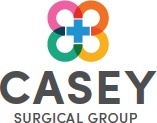Ingrown Toenails
Ingrown toenails are a very common and painful condition of the toe. They occur when the sides or corners of the nail grow inwards and penetrate the skin of the toe. Pain is often accompanied by swelling and redness.
The condition is more often seen in teenagers and adults rather than children and is more common in men than women. Untreated ingrown toenails may lead to an infection or an abscess that necessitates surgical treatment.
The conservative treatment includes –
- Soaking the foot regularly in warm water.
- Antibiotics to treat infection.
- Analgesics for pain relief.
- Wearing open-toed shoes or sandals.
Surgery, however, is the best option to prevent the condition from recurring and will be considered when other local treatments have failed.
Surgery
There are two surgical options:
Wedge Resection – Most commonly when only the outer aspect of the toe is affected a procedure called a wedge resection is performed. If an infection or an abscess is present this will be drained from the end of the toe and extra tissue that has grown around the nail removed. The ingrown toenail is cut then along its edge and removed.
This operation requires removal of the relevant section of the nail and surgical excision of the nail matrix (the site of nail growth).
Nail ablation – when the problem relates to an abnormal growth of the entire nail a similar procedure is undertaken but the entire nail and matrix are removed completely. As a result healing is slower due to the larger raw area. This method aims to prevent any future regrowth of the nail.
Instructions after surgery may include:
- Pain medication may be taken as directed by your surgeon.
- The dressing should be left intact even if soiled until review by your surgeon or their nurse after 2-3 days. It is essential to keep the dressing and wound dry until then.
- Antibiotics will occasionally be prescribed.
- Rarely, if after surgery the whole toe is very painful, the bandage may be too tight. If this is the case it needs to be removed and reapplied more loosely by a doctor. In these circumstances it is important to contact a doctor, urgently.

 Menu
Menu





